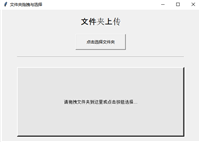前提条件
已创建cluster
已获得api-key
已安装最新版sdk
接口定义
python示例:
collection.query_group_by(
self,
vector: optional[union[list[union[int, float]], np.ndarray]] = none,
*,
group_by_field: str,
group_count: int = 10,
group_topk: int = 10,
id: optional[str] = none,
filter: optional[str] = none,
include_vector: bool = false,
partition: optional[str] = none,
output_fields: optional[list[str]] = none,
sparse_vector: optional[dict[int, float]] = none,
async_req: bool = false,
) -> dashvectorresponse:
使用示例
说明
需要使用您的api-key替换示例中的your_api_key、您的cluster endpoint替换示例中的your_cluster_endpoint,代码才能正常运行。
python示例:
import dashvector
import numpy as np
client = dashvector.client(
api_key='your_api_key',
endpoint='your_cluster_endpoint'
)
ret = client.create(
name='group_by_demo',
dimension=4,
fields_schema={'document_id': str, 'chunk_id': int}
)
assert ret
collection = client.get(name='group_by_demo')
ret = collection.insert([
('1', np.random.rand(4), {'document_id': 'paper-01', 'chunk_id': 1, 'content': 'xxxa'}),
('2', np.random.rand(4), {'document_id': 'paper-01', 'chunk_id': 2, 'content': 'xxxb'}),
('3', np.random.rand(4), {'document_id': 'paper-02', 'chunk_id': 1, 'content': 'xxxc'}),
('4', np.random.rand(4), {'document_id': 'paper-02', 'chunk_id': 2, 'content': 'xxxd'}),
('5', np.random.rand(4), {'document_id': 'paper-02', 'chunk_id': 3, 'content': 'xxxe'}),
('6', np.random.rand(4), {'document_id': 'paper-03', 'chunk_id': 1, 'content': 'xxxf'}),
])
assert ret
根据向量进行分组相似性检索
python示例:
ret = collection.query_group_by(
vector=[0.1, 0.2, 0.3, 0.4],
group_by_field='document_id', # 按document_id字段的值分组
group_count=2, # 返回2个分组
group_topk=2, # 每个分组最多返回2个doc
)
# 判断是否成功
if ret:
print('query_group_by success')
print(len(ret))
print('------------------------')
for group in ret:
print('group key:', group.group_id)
for doc in group.docs:
prefix = ' -'
print(prefix, doc)
参考输出如下
query_group_by success
4
------------------------
group key: paper-01
- {"id": "2", "fields": {"document_id": "paper-01", "chunk_id": 2, "content": "xxxb"}, "score": 0.6807}
- {"id": "1", "fields": {"document_id": "paper-01", "chunk_id": 1, "content": "xxxa"}, "score": 0.4289}
group key: paper-02
- {"id": "3", "fields": {"document_id": "paper-02", "chunk_id": 1, "content": "xxxc"}, "score": 0.6553}
- {"id": "5", "fields": {"document_id": "paper-02", "chunk_id": 3, "content": "xxxe"}, "score": 0.4401}
根据主键对应的向量进行分组相似性检索
python示例:
ret = collection.query_group_by(
id='1',
group_by_field='name',
)
# 判断query接口是否成功
if ret:
print('query_group_by success')
print(len(ret))
for group in ret:
print('group:', group.group_id)
for doc in group.docs:
print(doc)
print(doc.id)
print(doc.vector)
print(doc.fields)
带过滤条件的分组相似性检索
python示例:
# 根据向量或者主键进行分组相似性检索 + 条件过滤
ret = collection.query_group_by(
vector=[0.1, 0.2, 0.3, 0.4], # 向量检索,也可设置主键检索
group_by_field='name',
filter='age > 18', # 条件过滤,仅对age > 18的doc进行相似性检索
output_fields=['name', 'age'], # 仅返回name、age这2个field
include_vector=true
)
带有sparse vector的分组向量检索
python示例:
# 根据向量进行分组相似性检索 + 稀疏向量
ret = collection.query_group_by(
vector=[0.1, 0.2, 0.3, 0.4], # 向量检索
sparse_vector={1: 0.3, 20: 0.7},
group_by_field='name',
)
到此这篇关于一文详解如何使用python sdk在collection中进行相似性检索的文章就介绍到这了,更多相关python相似性检索内容请搜索代码网以前的文章或继续浏览下面的相关文章希望大家以后多多支持代码网!







发表评论